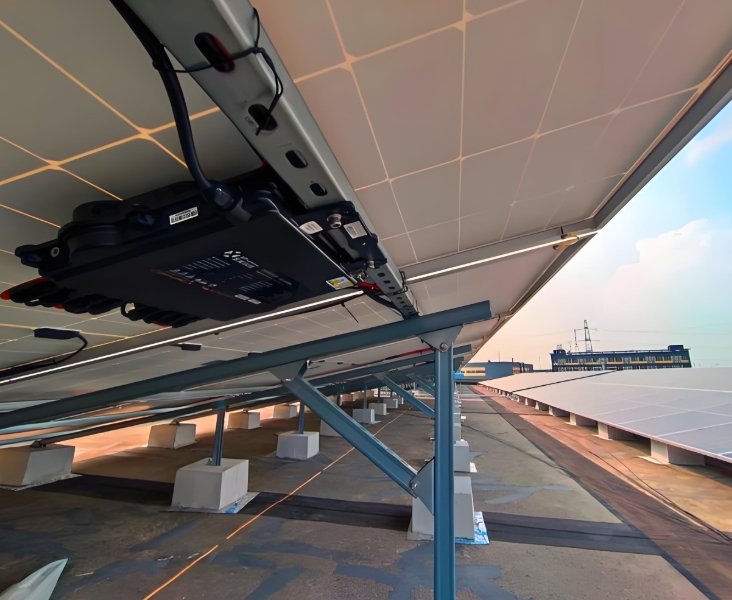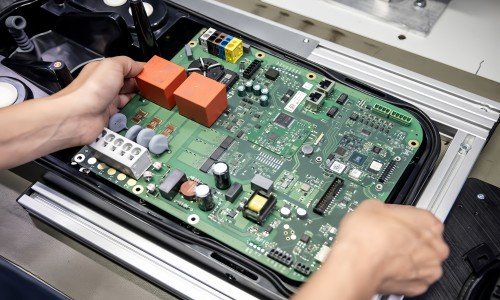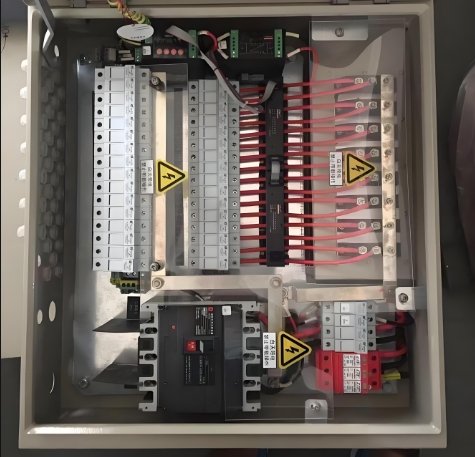Inverter protection refers to the safety mechanisms built into an inverter to prevent damage from electrical faults and hazardous conditions. These protections ensure the inverter operates efficiently and safely over time, safeguarding both the inverter and connected devices.
Overvoltage Protection
Overvoltage protection safeguards the inverter from high voltage levels.
When the voltage supplied to the inverter exceeds the rated value, it can cause damage to sensitive components. Overvoltage protection automatically disconnects the inverter to prevent this damage, ensuring the inverter remains safe and operational.
Undervoltage Protection
Undervoltage protection prevents the inverter from operating under low voltage conditions.
If the DC input voltage drops below the minimum required level, the inverter will shut down to prevent damage or inefficient operation. This protection ensures that the inverter only works when there is sufficient input voltage.
Overcurrent Protection
Overcurrent protection ensures that the inverter does not experience excess current.

Excess current can lead to overheating and damage to the inverter’s internal components. Overcurrent protection monitors the current flow and disconnects the inverter if it exceeds the safe threshold, ensuring it operates within safe limits.
Short Circuit Protection
Short circuit protection protects the inverter from electrical shorts that could cause severe damage.
If a short circuit occurs, a rapid surge of current can damage the inverter. This protection detects short circuits and automatically shuts down the inverter to avoid permanent damage.
Overtemperature Protection
Overtemperature protection prevents the inverter from operating at unsafe temperatures.

Inverters generate heat during operation, and excessive heat can lead to component failure. This protection system monitors the inverter's temperature and shuts it down if it reaches unsafe levels, ensuring safe operation.
Surge Protection
Surge protection safeguards the inverter from sudden voltage spikes or power surges.
Surges can occur due to lightning strikes or sudden fluctuations in the power grid. Surge protection ensures that these spikes do not damage the inverter by diverting excess voltage safely away from the system.
Ground Fault Protection
Ground fault protection detects any leakage of electricity to the ground.
If an electrical current unintentionally flows to the ground, it can cause a dangerous situation. Ground fault protection ensures the inverter shuts down if a ground fault is detected, reducing the risk of electrical hazards.
Reverse Polarity Protection
Reverse polarity protection prevents damage from incorrect wiring connections.

If the positive and negative wires are accidentally reversed during installation, this protection prevents the inverter from operating, thus protecting it from damage due to incorrect polarity.
Anti-Islanding Protection
Anti-islanding protection ensures the inverter shuts down during grid failure.
Island mode occurs when the inverter continues to supply power to a portion of the grid during an outage, posing a risk to repair personnel. Anti-islanding protection detects grid failures and ensures the inverter shuts down to prevent this from happening.
Lightning Protection
Lightning protection prevents damage from lightning strikes.
In areas prone to thunderstorms, lightning strikes can cause extreme power surges. Inverters equipped with lightning protection have mechanisms to absorb or divert the surge, preventing damage to the inverter and the electrical system.
Conclusion
Inverter protection is vital for the safe and efficient operation of an inverter.
By incorporating various protection features such as overvoltage, undervoltage, surge protection, and anti-islanding, inverters are equipped to handle potential electrical hazards, extending their lifespan and safeguarding both the system and users. These protections ensure that the inverter operates reliably and efficiently, even under adverse conditions.




